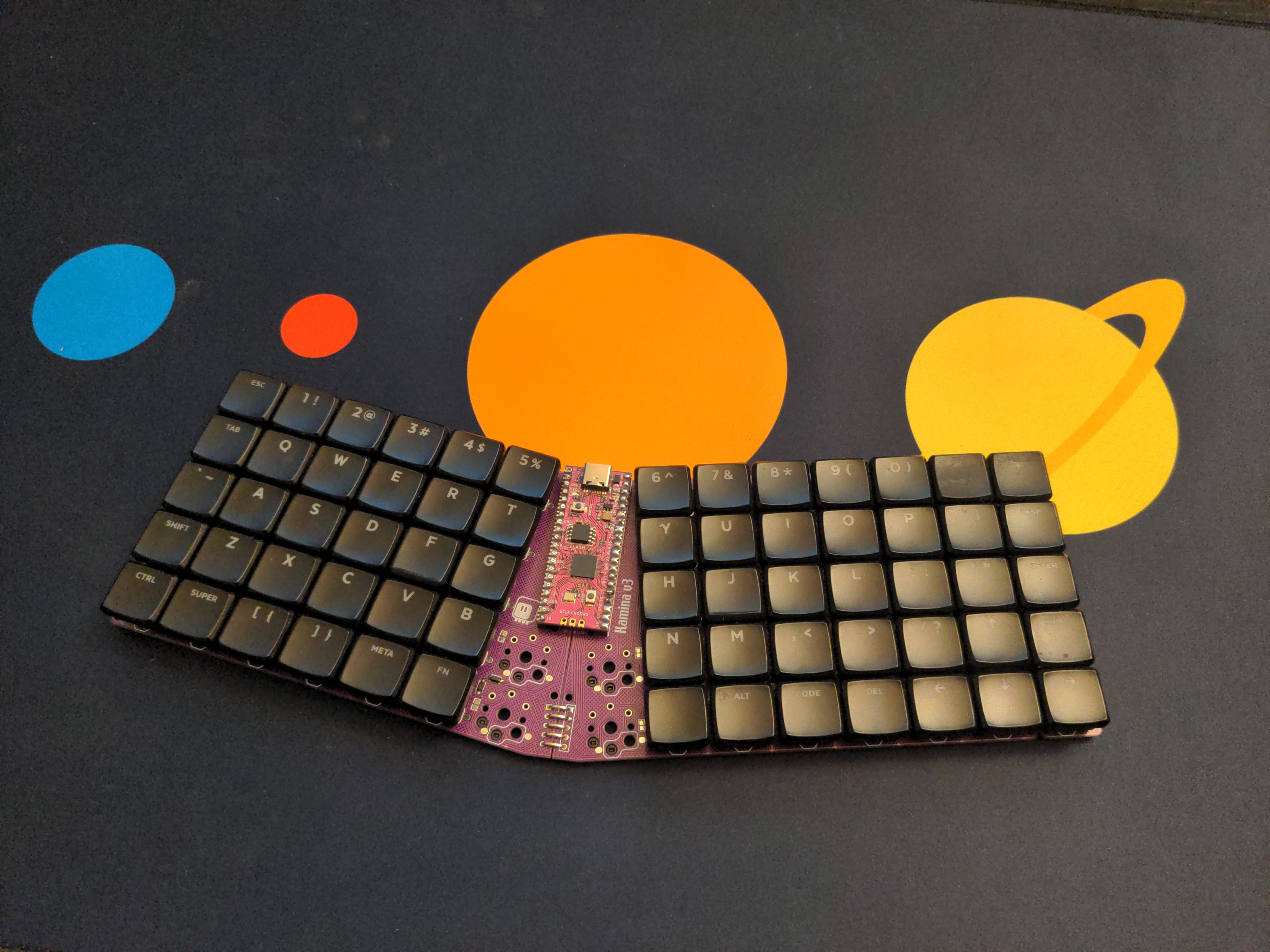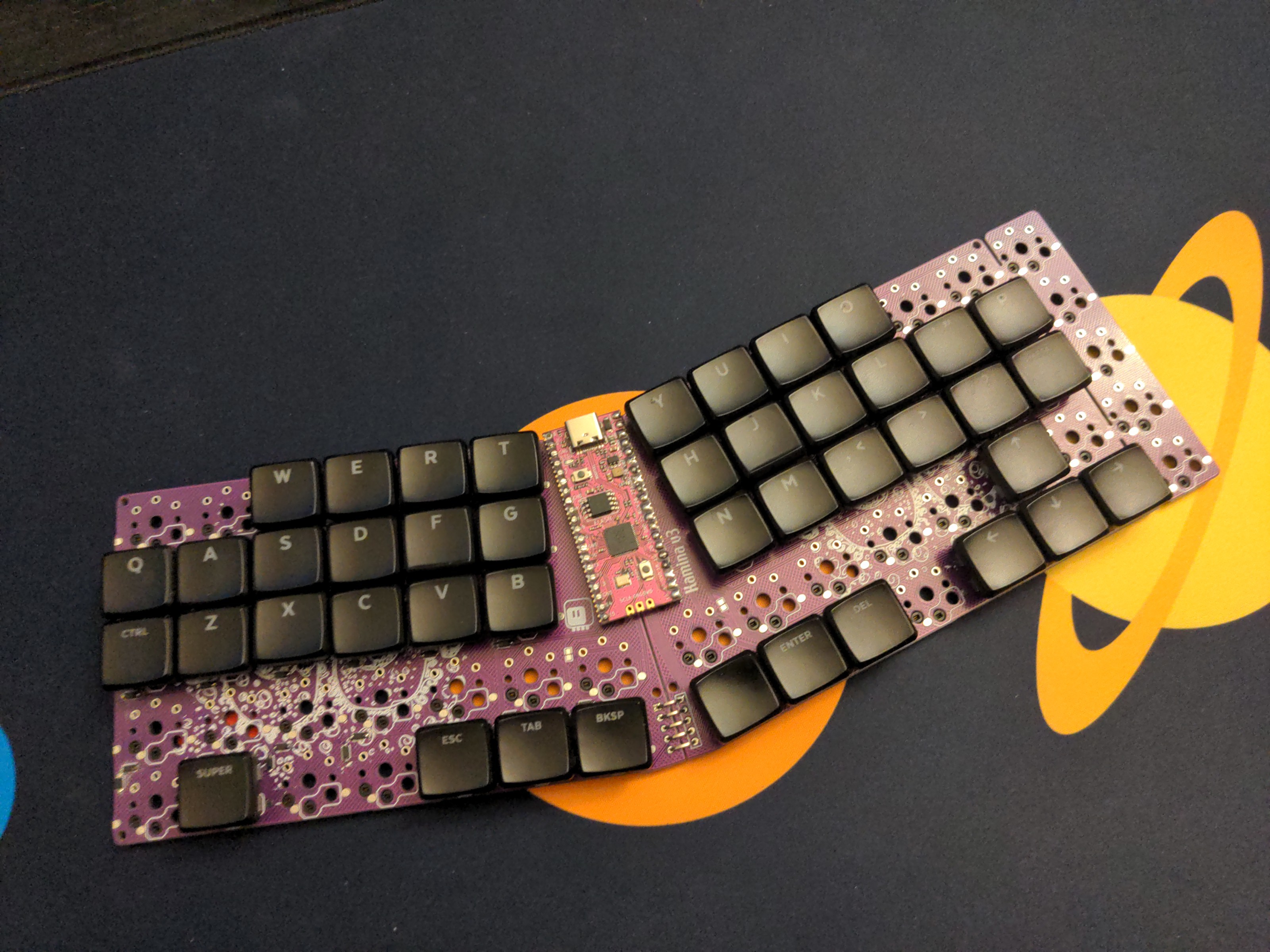Kamina 3.1¶
Published on 2023-12-22 in Kamina Keyboard.
As mentioned in the previous log, I decided to do one more version of this keyboard. The main change is that in place of a SAMD21 bare microcontroller, I’m now using a Raspberry Pi Pico or compatible microcontroller developer board. This makes this keyboard much easier to assemble and program by people who are not comfortable soldering tiny QFN footprints or flashing a bootloader over DAP.
Other changes include optional hot-swap sockets, breakable last column, and four additional keys at the middle of the board. There is also a technical change: it’s no longer a single PCB, but instead you need two identical PCBs, one half flipped, to make the full keyboard. This way it’s much cheaper to fabricate the PCB.
I did this, because I’ve seen a lot of interest in this kind of a middle ground between traditional keyboards and fully ergonomic ones.

Note however, that because of the hot-swap sockets, you can easily turn this into a proper ergonomic board when you feel braver:

To assemble the board, you still need to solder all those SMD diodes and hot-swap sockets, and to solder the dev board in place (or pins and a socket, if you want it to be removable, like in my examples). Version 3.0 also needs a bodge between the top jumpers on both sides, but the version 3.1 that I’m publishing already has that fixed.
 deshipu.art
deshipu.art